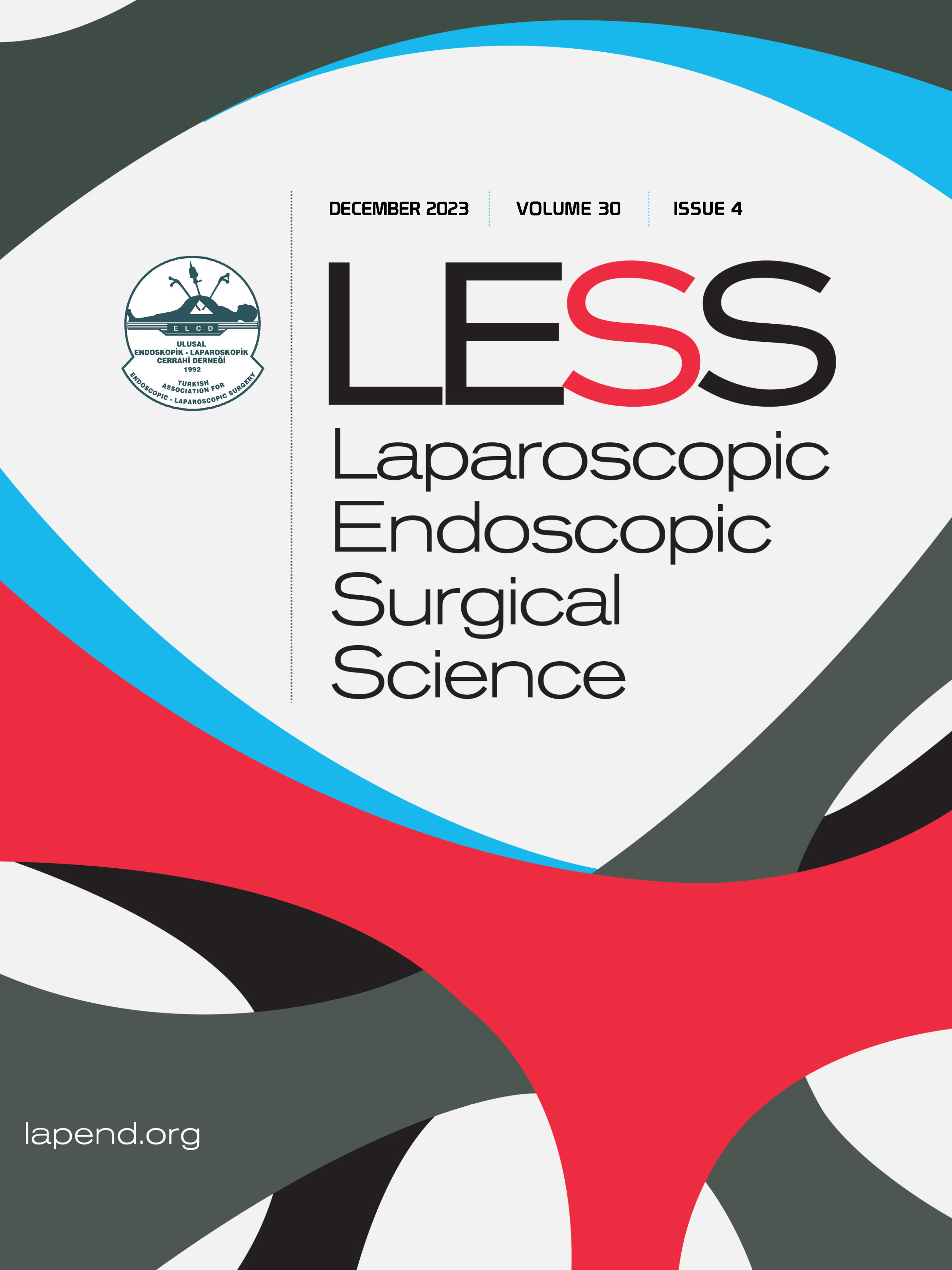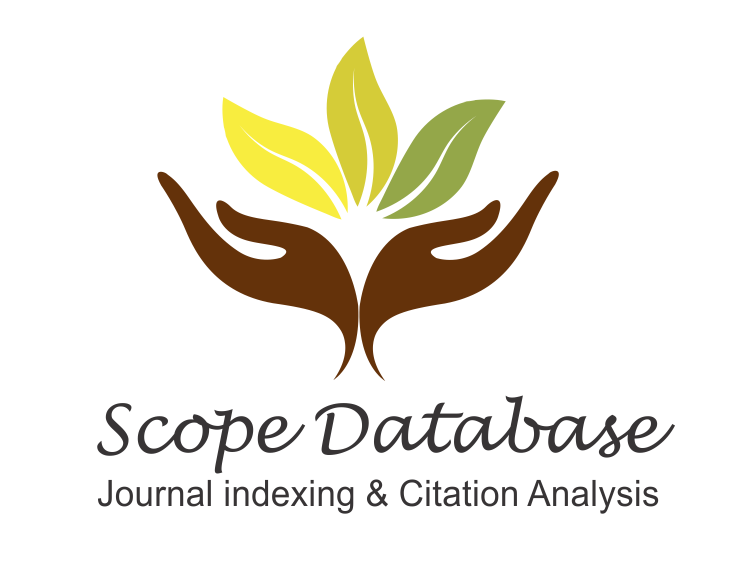Volume: 15 Issue: 4 - 2008
| RESEARCH ARTICLE | |
| 1. | Intraoperative cholangiography during laparoscopic cholecystectomy Kamer Tomaoğlu, Yavuz Selim Sarı Pages 155 - 162 INTRODUCTION: Laparoscopic cholecystectomy (LC) has the advantage of shortening hospitalisation, causing less postoperative pain and visible scarring associated with standard cholecystectomy. LC is considered as the gold satandard of cholecystectomiy. While LC seems to have great advantages, its safety must be established. The rate of bile duct injuries seems to be elevated in LC when compared to open cholecystectomy. Intraoperative cholangiography can prevent iatrogenic bile duct injury during LC. METHODS: Between 2001 and 2003, out of the 81 laparoscopic cholecystectomies, intraoperative cholangiography was performed in 21 patients (26%) in Surp Pirgic Hospital. The indications of intraoperative cholecystectomy were past history of jaundice, elevation of cholestatic enzymes and dilation of common bile duct. RESULTS: 13 patients were female and 8 patients were male. The mean age was 54,6 years. Intraoperative cholangiography was successful in 19 cases. 10 patients presented with symptomatic gall bladder calculs, 4 patients presented with acute edematous pancreatitis and 5 patients had acute cholecystitis. Two patients had ERCP in the preoperative period. The average period of cholangiography was 23minutes. No anatomic variations, anomalies or CBD stones were found. No complications due to laparoscopic cholecystectomy itself were encountered. DISCUSSION AND CONCLUSION: Even if rutine use of laparoscopic intraoperative cholangiography does not seem to be necessary, Surgeons have to be techniquely capable of performing the procedure in selective cases. Intraoperative cholangiography (IOC) can prevent iatrogenic bile duct injury during LC. |
| REVIEW | |
| 2. | Conscious sedation in endoscopy and the nurses role Nuran Akyüz Pages 163 - 169 Conscious sedation/analgesia (Moderate sedation) refers to the drug-induced state that allows the patient to tolerate unpleasent sensations while still maintaining control of protective reflexes. The ability to respond purposefully to tactile and verbal stimulation is within the patients control. No interventions are required to maintain apatent airway, and spontaneous ventilation is adequate. Cardiovascular function is usually maintained. Medication before and during endoscopic procedures may be used to diminish gastrointestinal secretions or motility, and to provide amnesia to ensure the patients safety, comfort, and cooperation. In general, the drugs used for moderate sedation and analgesia routinely consist of a combination of narcotic such as fentanyl or meperidine and a tranquilizer such as midazolam or diazepam. In patients who are resistance to sedation, the physician may request administration of other drugs to potentiate the action of the narcotic. An intravenous catheter allows for titration of dosage and permits administration of intravenous fluids and drugs. The amount of sedation or analgesia required for any procedure varies depending on the patients age, prior medications, associated illnesses, anxiety level, and type and duration of the procedure. The nurse is responsible for the administration of agents prescribed by the physician. During endoscopic procedures, the nurse monitors and documents the patients state of consciousness and vital signs. The nurse must remain vigilant for untoward reactions to administered medication. This article is planned to provide knowledge to the nurses which are working in endoscopy units about the pharmacology of drugs used for sedation; mechanism of actions, indications, contraindications and the other drugs used to reverse their actions. Practicing nurses can use that knowledge to reduce complication rates and to enhance the quality of nursing care. |
| 3. | A rare polypoid lesion of the gallbladder: Adenomyomatosis Ahmet Fikri Yücel, Ahmet Pergel, Ibrahim Aydın, Doğan Yıldırım, Murat Mounla, Nilgün Demirbağ, Dursun Ali Şahin Pages 170 - 173 Adenomyomatosis of the gallbladder is a condition of benign hyperplasia of unknown etiology, characterised by local or diffuse thickening of the muscular layer, with invagination of the epithelium, forming Rokitansky-Aschoff sinuses. In some cases it looks like a malignant tumor. The diagnosis can be suspected during ultrasound examination. Gall bladder polyp was detected in the abdominal ultrasonography of a 50-year old female patient with epigastric pain and dyspeptic complaints. Laparoscopic cholecystectomy was carried out and gall bladder adenoma was diagnosed according to histopathological examination. We aimed to present our case with brief relevant literature information. |
| RESEARCH ARTICLE | |
| 4. | Our experience with Laparoscopic Modified Heller myotomy and Dor fundoplication in Esophageal Achalasia Yalın Işcan, Fatih Tunca, Yasemin Giles, Levent Avtan, Serdar Tezelman, Tarık Terzioğlu, Cavit Avcı Pages 174 - 179 INTRODUCTION: In this study we have retrospectively evaluated the patients which underwent laparoscopic modified Heller myotomy for achalasia. METHODS: Between January 2006 and January 2011, 20 patients underwent laproscopic Heller myotomy and Dor fundoplication in Istanbul Faculty of Medicine Department of General Surgery. The files of the patients were evaluated retrospectively. RESULTS: The mean age of the patients were 45.3± 10.9 years and female /male ratio was 1.86/1 (13/7). The mean symptom period was 17±4.9 months. In the preoperative period, 14(%70) patients underwent one, 6 (%30) patients underwent two times of pneumatic esophageal dilatation. Botox treatment was performed in 4 (%20) of the patients before the pneumatic dilatation. The mean lower esopghageal sphincter (LES) pressure of the patients was 24,2±11,6 mmHg. All of the patients were underwent laproscopic Heller myotomy and Dor fundoplication. The mean operation time was 62 ±17.6 minutes. The esophageal mucosal rupture occured in 1 (%5) patient during the operation and repaired laparoscopically. The mean hospitalization time was 2.3±0.6 days. The mean follow-up time was 26,2±20,2 months. No recurrence was occured during the follow-up period. Gastro-esophageal reflux (GER) was occurred in 2 (%10) patients with mild symptoms and treated medically. Port site hernia was occured in 1 (%5) patient. DISCUSSION AND CONCLUSION: Laproscopic Heller myotomy is the most effective treatment for esophageal achalasia. Because of the higher GER rates in patients without antireflux procedure, we recommend that Dor fundoplication should be added to the Heller myotomy. |
| 5. | Retrievable stent usage in esophagial stenotic lesions Oğuz Koç, Yavuz Selim Sarı, Hasan Bektaş, Vahit Tunalı, Hasan Ökmen Pages 180 - 183 INTRODUCTION: Today, a variaty of stents are used to palliate for symptoms in esophagial cancer. But with retrievable stents produced in recent years, benign stenosis or fistulas of esophagus are being managed in common. We hypothesise that retrievable stent usage will be as common as the other stents. METHODS: In three patients, retrievable nitinol stents have been placed with the aid of endoscopy and fluoroscopy. No complication occured during the procedure. RESULTS: The ages of three patients were 48-50-54 in respectively. In the first patient, there was a stenosis in the upper segment of esophagus close to the oropharinx which was due to tumor. As to the presumption of intolerance of patient to any of stent, retrievable stent were preferred. After stent placement, PEG insertion was done through the stent because of tumor ingrowth was expected in near future. The second patient had a history of larynx surgery due to cancer and retrievable stent was palced in the servical stenotic region. The third patient had a surgery of cardia tumor and pathology showed positive tumor cells in the anastomosis and stenosis were found endoscopically. As a bridge to the definitive surgery, retrievable stent were placed. DISCUSSION AND CONCLUSION: In the literature there are limited numbers of studies related to retrievable stents. Although it is used in benign stenosis in the first studies then there are several studies reporting its usage in malign stenotic lesions. It can be placed as easy as the other stents and effectivness of the retrievable stents remain the same as the others. In our study, the numbers of patients are so low but we will report the late results as our numbers growed. |















